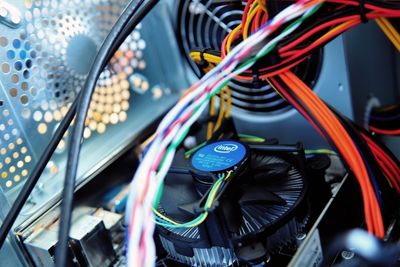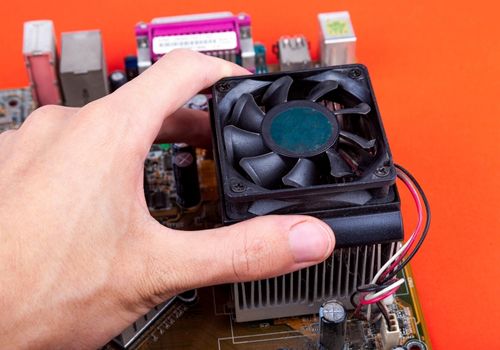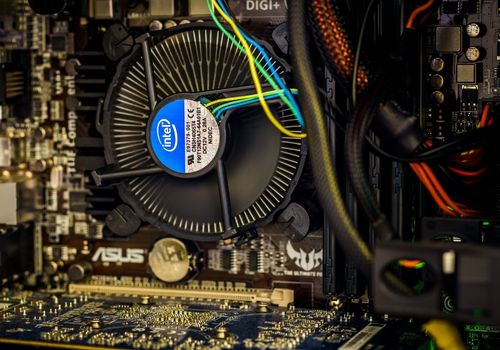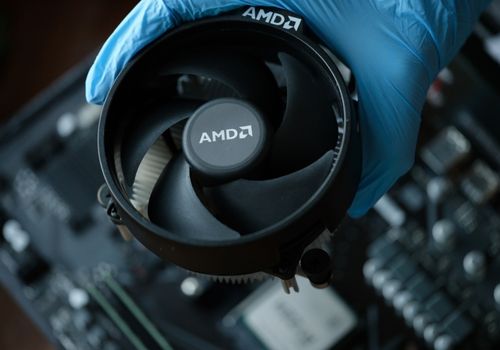
Your CPU fan runs at different speeds depending on the CPU temperature. At higher temperatures, you need better cooling, and at lower temperatures, less noise. Your CPU's fan curve is a graphical depiction of how fast your CPU fan runs at each temperature. You can adjust fan curves to your liking to get the optimal balance between performance and noise.
It was over a decade ago that I heard about CPU fan curves for the first time. It was on a forum for gaming PCs, and after talking with one of the members for a bit, I went out to learn how to make a custom fan curve. Since then, I've made sure to control CPU fan speeds on every PC I've had, which has given me a lot of experience when it comes to controlling fans.
I've put all of my expertise in CPU fan curves into this guide, just for you. If you've been trying to understand CPU fan speeds and how to adjust them, you're in the right place. Let's jump right into what you need to know.
Contents
It can be a little tough to understand, but a fan curve is simply a graph that shows the relationship between your fan speed and the temperature of the component it is attached to.
So, for instance, you can have a GPU fan curve or a CPU fan curve.
A CPU fan curve shows how fast your CPU cooler fan moves (in rotations per minute, or RPM) depending on how hot the CPU is.
This graph usually has the CPU fan speed on the vertical axis, either written in RPM or as a percentage of the maximum fan speed. The temperature of the CPU on the horizontal axis.

Now that you understand what CPU fan curves are, you might be wondering, why do you need to care about fan speeds in the first place? Well, I'll explain that.
When you run your computer, the components inside it perform billions of calculations every second. With all this work going on, it is natural that they produce a lot of heat.
When this heat is left unchecked, it reduces the performance of the components producing them, particularly the CPU and GPU.
Your GPU fans and CPU cooler fans are responsible for helping reduce this heat and keep temperatures low. The faster they spin, the more of a cooling effect they can have.
However, with a higher fan speed comes more noise. This is why it is important to have all the fans in your PC run only when they are needed the most.
Fan curves make it possible to view how your fan speed changes as the temperature builds. Plus, it also lets you see how the manufacturer has set the PC fans to respond to heat.
Since this might not be optimal for you, it is possible to adjust fan curves to your taste. That's exactly why it is important to understand the CPU fan curves for your computer, especially if you want to tailor it to your taste.
One of the things that impacts your average CPU fan speed is how large the fan is. The size of the fan impacts how much airflow there is.
A fan with a bigger diameter tends to run at a lower speed most of the time since it is able to push more air with a single rotation. Since the fan speed is lower, they also tend to be quieter.
Smaller fans push less air, so the CPU fan speed needs to be higher to compensate for that.
Below are some of the typical ranges for fan speeds for particular fan sizes:
However, ultimately, the best way to know the fan speeds for your system fan is to check the manual or the manufacturer specifications online.
If you want to take a look at your fan speed, there are two major ways that you can do this.
You can either rely on the fan RPM displayed in the BIOS of your desktop PC, or you can use third-party apps like SpeedFan or Hardware Monitor.

The BIOS on your computer is the first menu that you can access to change settings related to the motherboard. It can also be used to monitor your computer's hardware.
How your computer's BIOS settings look depends on the manufacturer and type of motherboard that you have.
Because of this, it'll be hard for me to tell you exactly how to open the BIOS or check your fan speed, but the tips below might be helpful.
Another way to check out your current fan speed is to use a third-party application such as SpeedFan.
Within seconds of opening this program, you'll be able to see the fan RPM for all your fans. Apart from the CPU fan, this includes your GPU fans, power supply fans, and intake fan.
To use SpeedFan to check your fan RPM, follow these steps:
There are other apps you can use for this purpose, like HWiNFO and HWMonitor. The process is pretty much the same, as these apps have simple interfaces that are straight to the point.
Now, it's one thing to see how fast your fan spins, but it is another to take control of your CPU fan curves and make sure that it runs optimally to keep your CPU cool, yet keep fan noise down.
The good thing is that there are a lot of applications available that give you complete control over your PC fan curve.
Although making changes to your custom fan curve settings can seem daunting, I'll do my very best to run you through the process with everything I know.
There are a few ways you can do this, so let's get right into them.

I personally like using Speedfan to modify my fan curve because it is a lightweight program, and the interface is rather straightforward, especially for beginners.
To use SpeedFan to alter your fan curve, follow the steps below:
It takes a lot of steps, but once you do it once, you'll get the hang of using SpeedFan.
Some tips to keep in mind are that you don't want the speed on the fan curve to go under 20% at any time, to ensure that the computer is still being ventilated well.
In some cases, you may not need to push the fans to max speed, but if you experience any thermal throttling, it might be a good idea to use 100% on the fan curve sometimes.
MSI Afterburner is made by a company that is well-known for its gaming hardware and PCs, but fortunately, its MSI Afterburner software can be used on most computers.
While you can mess around with a fan curve in this program, you should know that it majorly controls the GPU fans in your PC and not the CPU fans.
To use Afterburner to make changes to your GPU fan curve, follow the steps below:
Similar to when you're using SpeedFan, make sure that the fans never go below 20% of their maximum speed, as this makes sure that there's always enough airflow to prevent dust buildup.
When it comes to your GPU, you want to avoid temperatures over 80°C, so I recommend pushing the fan to 100% at this point. This will get rid of hot air and prevent thermal throttling.

Now, before we get started using the BIOS for fan control, there are a few things to note.
First of all, while the BIOS usually lets you check the speed of your fans, not all of them let you control it. Secondly, even those that give you some degree of fan control don't give you access to a fan curve.
Either way, if your motherboard supports fan control settings, here are the basic steps to follow:
CPU fan curves are graphs that show the relationship between the speed of the fans in your computer and the different temperatures that your CPU can be at. Being able to modify these graphs is important because it can give you the ability to get better performance at higher temperatures, or to reduce the noise from your fans at lower temperatures.
You can take a look at your fan speed using your BIOS or third-party programs. If you want to actually control your fan curve and change how your fan responds to temperature increases and drops, you can use MSI Afterburner, SpeedFan, or even your BIOS to make those changes.
Did this article teach you all you need to know about CPU fan curves and how to modify them? If so, take a look at our related articles to learn more.
